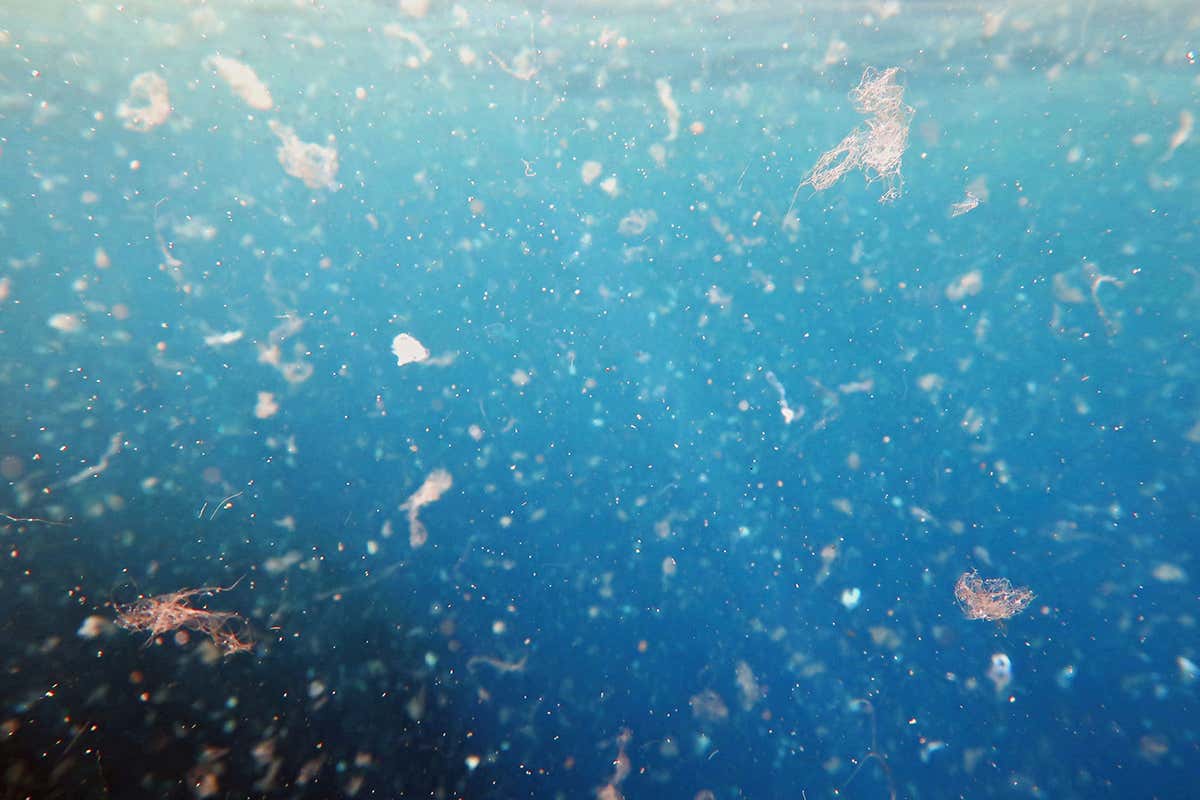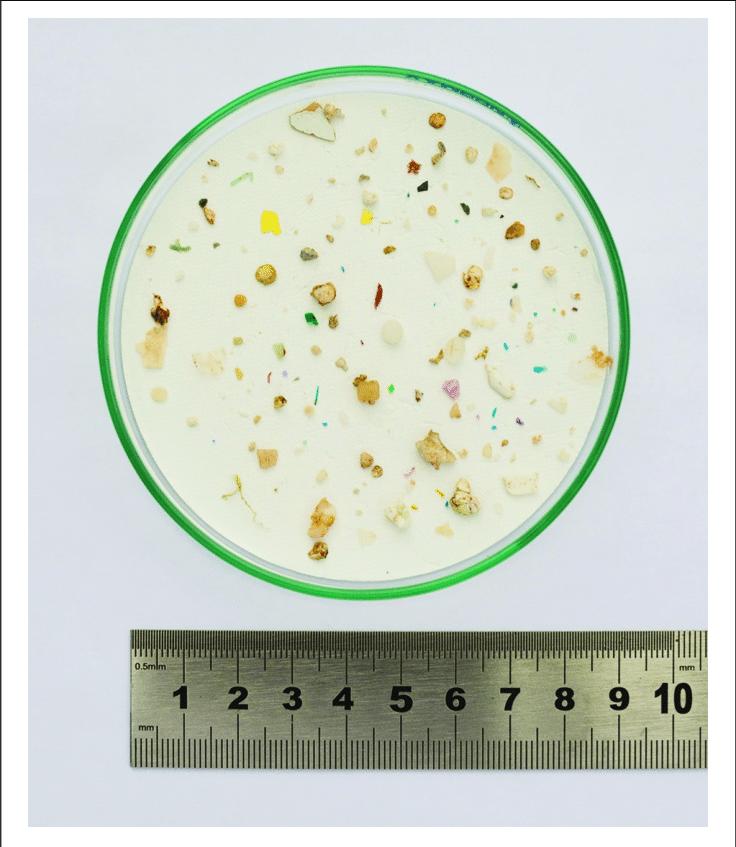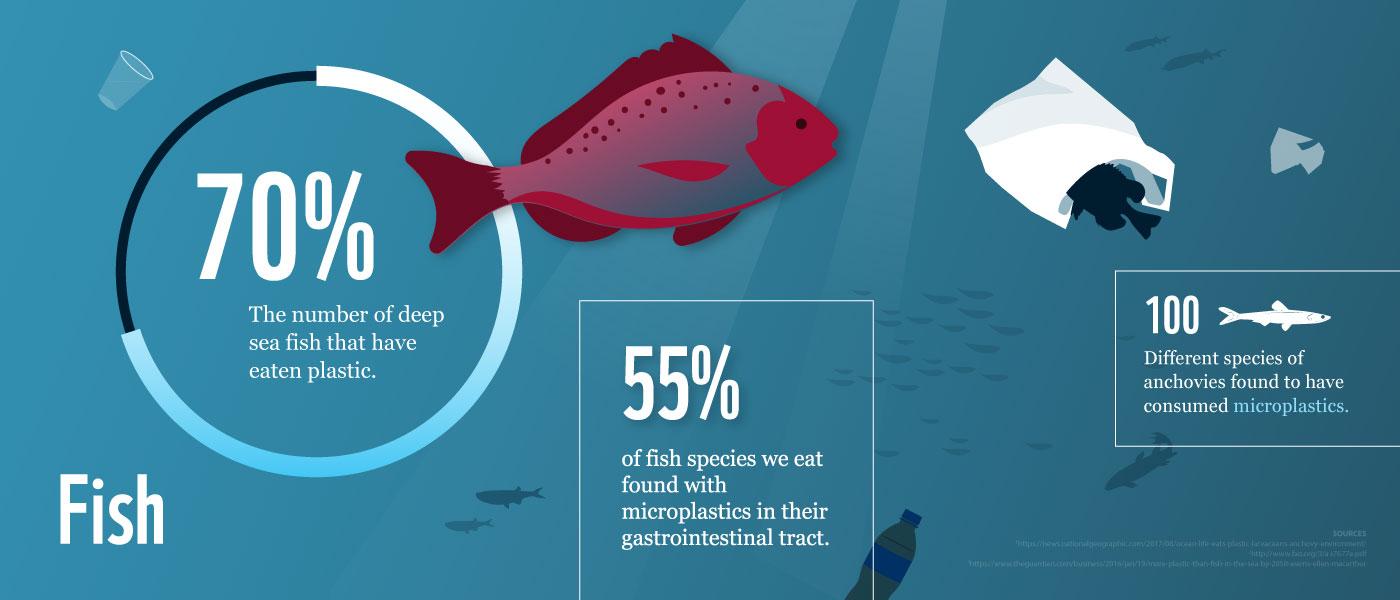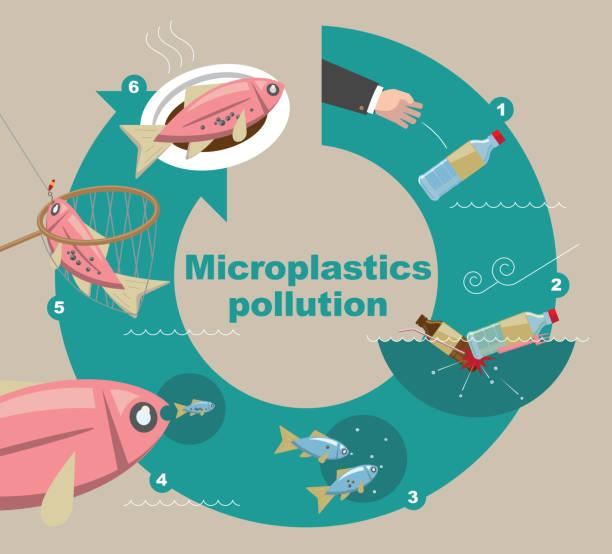
What are microplastics? We hear about them all the time in relation to water but what actually are they, where do they come from and why are they bad for us?
Most of the rubbish in our oceans is plastic. Any plastic debris under 5 millimetres is classed as a microplastic.
Microplastics come mainly from either:
• Bigger plastic pieces being broken down to smaller pieces
• Microbeads – tiny manufactured pieces of plastic that are used in health and beauty products.
Both enter our oceans through various ways – wind blows plastic from landfills to water, plastic dumped into rivers gets carried to the ocean, plastic gets through wastewater treatment facilities: the list is endless. However, the source of the plastic is always the same, and that is human production and use of plastic.


Plastic isn’t biodegradable, so it only breaks down into smaller and smaller pieces, eventually becoming microplastics. 5mm may be the crossover from plastics to microplastics, but microplastics can be as small as 1/1000 of a 1/1000 of a millimeter.
Plastics cause so much harm to our environment because they attract pollutants, which are any substance that cause pollution. Some of these pollutants, such as polychlorinated biphenyls (PCBs) are toxic. Plastics also have chemicals inside them which leak out over time. Along with that, microorganisms, like bacteria, can latch onto microplastics.

Because they are so small, microplastics tend to get eaten by marine life in our oceans – while the toxins don’t have a massive effect on them, they can still choke on the plastic and die. Too often, when a dead sea creature’s stomach is examined, an alarming amount of plastic is found.
We are also affected by microplastics: since so many fish have plastic in their stomach, we also consume that when eating seafood. Even more alarmingly, microplastics are getting so small that they are getting through waste treatment plants and into our drinking water – both tap and bottle.
Toxins obviously have a much larger affect on us compared to animals – especially for younger children. Along with the fact we aren’t meant to digest plastic, the smallest microplastics can also get through our digestive system into other body organs e.g. lymph nodes, not to mention the risk of bacteria that has latched onto the plastic.

Without a doubt, microplastics are a huge concern for us. While we can’t eliminate plastic use overnight, there are small steps we can take to help the situations. Reducing plastic use as much as possible is an obvious one but you can also:
1) Recycle recyclable plastic
2) Avoid using single use plastics e.g. use reusable shopping bags instead of plastic bags.
3) Help clean up your local beach or river
4) Avoid using products with microbeads
You can also help by donating to these charities:
• https://www.oceanicsociety.org/donate/#ways-to-give
• https://www.plasticsoupfoundation.org/en/donate-for-the-oceans/
